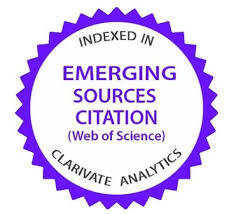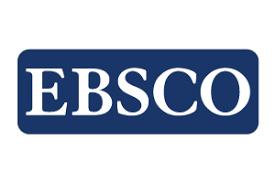University social responsibility from the student's perspective
DOI:
https://doi.org/10.35197/rx.12.01.e3.2016.20.mlKeywords:
IES, stakeholders, regional developmentAbstract
Institutions must respond to the demands of the environment in which they operate, developing substantive functions without being left out of the practices of social responsibility that have become a way to remain and contribute to the development of the community in which higher education institutions (HEIs) are inserted. The objective is to analyze the perception of students at the Autonomous University of Carmen (UNACAR) on the actions and practices of social responsibility. Quantitative methodology was used, using a survey based on the proposals of Vallaeys (2009); as the main finding, an area of opportunity can be mentioned in teaching, linkage and research as well as in linkage with the environment; students perceive the university's position regarding social responsibility practices as acceptable.
Downloads
References
Aldeanueva, I. et al (2015). Experiencias iberoamericanas en responsabilidad social universitaria (recurso electrónico). Medellín: Funlam.
ANUIES (2000). La Educación Superior en el Siglo XXI. Líneas Estratégicas de Desarrollo. Una Propuesta de la ANUIES. Revista de la Educación Superior. Núm. 113, Vol. 29.
Asociación Nacional de Facultades y Escuelas de Contaduría y Administración, ANFECA (2016). Convocatoria para la obtención del Distintivo Responsabilidad Social Universitaria 2015 (RSU 2015). Consultado el 7 de abril de 2016, en: http://www.anfeca.unam.mx/docs/convocatoria_RSU_v5.pdf
Benneworth, P., y Jongbloed, B. W. (2010), Who matters to universities A stakeholder perspective on humanities, arts and social sciences valorization. Higher Education, 59 / 5, 567-588.
Carroll, A. (1991).The pyramid of corporate social responsibility. Business Horizons, 39-48.
Carroll, A. (1979). A Three-Dimensional Conceptual Model of Corporate Performance. Academy of Management Review, 4(4), 497.
Clarkson, M. (1995). A stakeholder framework for analyzing and evaluating corporate social performance. Academy of Management Review, 20(1), 92-117.
De la Cuesta, M. (2010). Experiencia de reporting sobre responsabilidad social en la UNED, II Jornadas de Responsabilidad Social de la Universidad de la Universidad Jaime I de Castellón de la Plana.
Consultado el 2 de febrero de 2016, en: https://dialnet.unirioja.es/descarga/articulo/4182231.pdf
Dodd, M. (1932). For whom are corporate managers trustees. Harvard Law Rev. 45, 1145-1163. Freeman, R. (1984). Strategic Management: A stakeholder approach. Massachusetts: Pitman.
Freeman, R. y Evan, W. (1977). A stakeholder theory of the modern corporation. En: Beauchamp, T.
Ethical, theory and business. Edit. Prentice Hall.
Garriga, E. y Melé, D. (2004). Corporate social responsibility theories: mapping the territory. Business Ethics, 53(1-2), 51-71.
Goodpaster, K. (1991). Business Ethics and Stakeholder Analysis. Business Ethics Quarterly, 53-73
López, M. et al (2012). Responsabilidad social empresarial o responsabilidad social universitaria: las universidades públicas mexicanas. En: López, M. Universidad Michoacana de San Nicolás de Hidalgo et al (2013). Análisis Organizacional, Política Científica y Desarrollo Tecnológico.
López, M. et al (2015). Las buenas prácticas en el marco de la responsabilidad social universitaria. Ra Ximhai, 101-112
Mitchell, R. et al (1997). Toward a Theory of Stakeholder Identification and Salience: Defining the Principle of Who and What Really Counts. The Academy of Management Review, Vol. 22, No. 4, 853-886
Mitroff, I. (1983). Stakeholders of the organizations. San Francisco: Jossey Bass
Preston, L. y Sapienza, H. (1990). Stakeholder management and corporate performance.The Journal of Behavioral Economics, 19(4), 361-375.
Rodríguez, J. (2010). Responsabilidad social universitaria: del discurso simbólico a los desafíos reales, en De la Cuesta, M. et al (coords.), Responsabilidad social universitaria. La Coruña: Netbiblo, Oleiros, 3-24.
Secchi, D. (2007). Utilitarian, managerial and relational theories of corporate social responsibility.
International Journal of Management Reviews, 9(4), 347-373.
UNACAR (2000). Plan de Desarrollo Faro U-2010. Ciudad del Carmen, Cam., México.
UNACAR (2004). Programa Universitario de Educación para el Desarrollo Sustentable. (PUEDES). Ciudad del Carmen, Campeche.
UNACAR (2012). Modelo Educativo Acalán. Fomento Editorial de la Universidad Autónoma del Carmen, México.
UNACAR (2014). Plan de Desarrollo Institucional (PDI) 2013-2017. Fomento Editorial, Ciudad del Carmen, Cam., México
Vallaeys, F. (2004). ¿Qué es la Responsabilidad Social Universitaria? Pontificia Universidad Católica del Perú. Perú.
Vallaeys, F. (2006). Breve marco teórico de responsabilidad social universitaria, en CD: Responsabilidad social universitaria, Red Universitaria de Ética y Desarrollo Social (RED), Iniciativa Interamericana de Capital Social, Ética y Desarrollo del BID. Disponible en: http://www.udlap.mx/rsu
Vallaeys, F. (2008). Responsabilidad social universitaria: una nueva filosofía de gestión ética e inteligente para las universidades, en Educación Superior y Sociedad, 2, 191-220.
Vallaeys, F. et al (2009). Responsabilidad social universitaria: manual de primeros pasos. México: D.F. McGraw-Hill Interamericana Editores, S.A. de C.V.
Wartick, S. y Cochran, P. (1985). The evolution of the corporate social performance model. Academy of Management Review, 10(4):758-769.
Downloads
Published
How to Cite
Issue
Section
License
Copyright (c) 2016 Myrna Delfina López Noriega, Lorena Zalthen Hernández, María de los Ángeles Cervantes Rosas

This work is licensed under a Creative Commons Attribution-NonCommercial 4.0 International License.
Usted es libre de:
- Compartir — copiar y redistribuir el material en cualquier medio o formato
- Adaptar — remezclar, transformar y construir a partir del material
- La licenciante no puede revocar estas libertades en tanto usted siga los términos de la licencia
Bajo los siguientes términos:
- Atribución — Usted debe dar crédito de manera adecuada , brindar un enlace a la licencia, e indicar si se han realizado cambios . Puede hacerlo en cualquier forma razonable, pero no de forma tal que sugiera que usted o su uso tienen el apoyo de la licenciante.
- NoComercial — Usted no puede hacer uso del material con propósitos comerciales .
- No hay restricciones adicionales — No puede aplicar términos legales ni medidas tecnológicas que restrinjan legalmente a otras a hacer cualquier uso permitido por la licencia.








